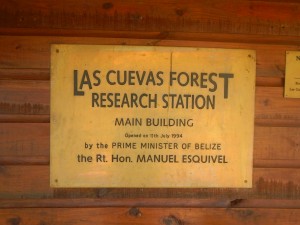Today we collected our camera traps, which gave us a chance to do the hike from the first day all over again. 13 miles is still a long way to hike in rainboots, long pants, and long sleeve shirts while the sun is hot and the air is muggy as heck. It was definitely easier than the first day though.
On the hike I learned some important things, like the power of duct tape and the necessity of tiny electrolyte packets you can put in your water. My feet are definitely hot and swollen today, but my blisters are not nearly as bad thanks to duct tape.
I saw one cool spider on the hike as well as a bunch of others scurrying underfoot. The cool spider I saw was sitting with its two back legs splayed and its front legs held together so they looked like one. It was sitting on the underside of a leaf with its red body and black and white legs standing out against the green background.
We analyzed the camera traps at night and saw a tapir in a mud wallow, a great currasow on a road, and an ocelot and an agouti in a leaf cutter ant nest clearing off the trail. Younger Clare would have flipped at seeing a camera trap she helped set up capture an ocelot. Honestly though, present-day Clare probably flipped more. I jumped up and down and squeaked for the tapir and the ocelot.
















